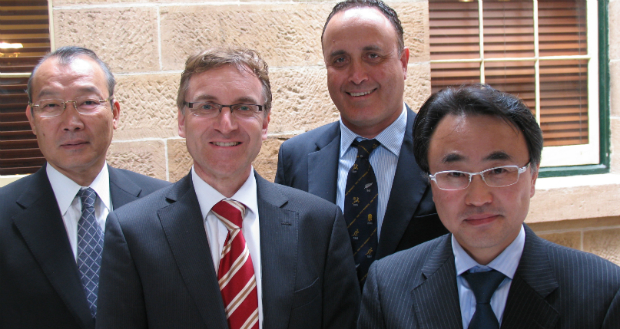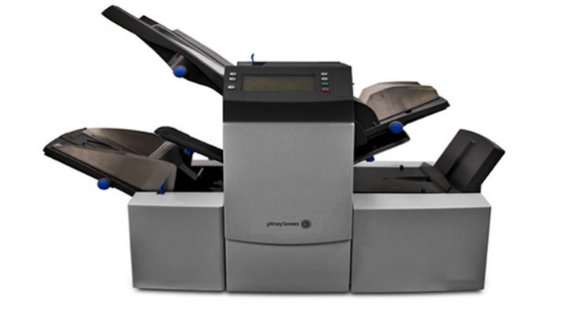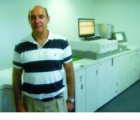
Press manufacturing giant Komori is diversifying its business to exploit new growth opportunities, with new security, digital and printed electronic divisions to join offset, which will remain the core business. The company has set itself a Yen100bn revenue target for 2016, which represents a rise of about 40 per cent from this year’s Yen70bn marker. Of this Yen72bn is targeted from offset, Yen14bn from security, Yen11bn from digital and Yen3bn from printed electronics.

New Komori: pictured in Sydney announcing the company’s new structure are (l-r) Toshiyuki Tsugawa, operating officer, Komori; Carstern Wendler, managing director, Ferrostaal; Rene Simpson, general manager print and finishing, Ferrostaal, and Toshiyasu Kubotera, general manager export, Komori
While its offset revenue will remain static those figures represents a virtual tripling of the company’s security business, and the rapid growth of its digital division that is currently in nascent stages. The B2 Impremia S29 inkjet sheetfed press co-developed with Konica Minolta is set for launch at the end of next year, and the co-developed Landa B1 nanopress is slated for release at drupa the following year. Komori is already selling the sheetfed toner based rebadged Konica Minolta bizhib Press C8000 as the Impremia C80. Komori also plans to develop a printed electronics press, which it says will kick in Yen3bn of revenue by 2016 Speaking to Australian Printer in Sydney Komori’s chief operating officer and group general manager overseas sales Toshiyuki Tsugawa says, “Offset press manufacturing will remain our core business, and will form the bulk of our activity. However like printers themselves Komori recognises that new opportunities are arising, and we will enter those markets with the same commitment to quality and productivity that we have built our offset market on.” Like its German rivals Komori has seen its offset market decimated since the GFC, the primary offset market has shrank by 50 per cent in the developed world, and by two thirds in the US. The emerging markets have risen strongly though, this year Komori has installed some 1600 press units into China alone, a 20 per cent on last year’s figure. The challenging market since the GFC has seen Komori rack up big losses, in 2012 they totaled Yen5.2bn, in 2013 (Komori’s year runs to March) the company managed to keep a lid on losses but was still in the red to the tune of Yen1.9bn. However this year it is on track to achieve a Yen2.8bn profit, in sales that it says will be Yen77bn, up from Yen70bn in 2013. It has had its best year in Australia for several years, with half a dozen major presses installed. Tsugawa says, “Throughout the period since the GFC Komori has had no debt and no bank loan. Our equity ratio is very strong as is our shareholder support, so we have needed no outside support. Now as the global economy gets back on track Komori is in a strong position to continue to develop its offset press business and to enter new markets from a firm foundation.”
Comment below to have your say on this story.
If you have a news story or tip-off, get in touch at editorial@sprinter.com.au.
Sign up to the Sprinter newsletter



